Balancing Individual and Collective Agency in Informal STEM Learning Experiences
Connected Science Learning January–February 2021 (Volume 3, Issue 1)
By David Schouweiler and Sara C. Heredia
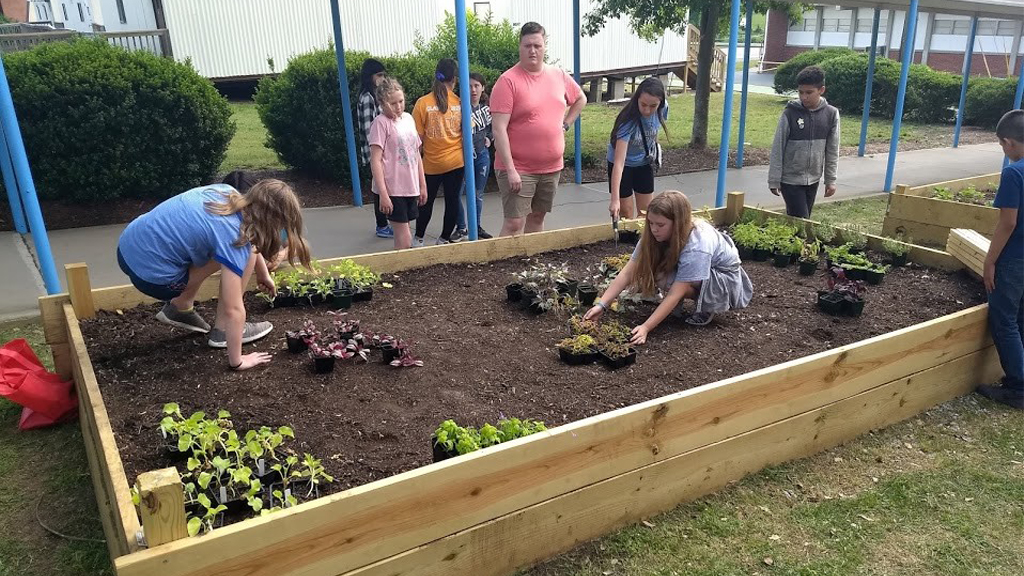
Calls for STEM education reform have drawn attention to the need for providing youth with agency to make meaningful decisions when they explore and apply science concepts (National Research Council 2012). Here, we define agency as the ability for youth to make meaningful decisions in how they engage with a learning setting (Giddens 1984). In many cases, informal and afterschool science settings can provide unique opportunities for flexibility, providing youth with more ways of potentially engaging in STEM (Calabrese Barton and Tan 2010; Calabrese Barton, Tan, and Greenberg 2016). Learning in STEM settings in which youth have authentic authority in identifying and exploring meaningful problems can provide more equitable and consequential engagement (Calabrese Barton and Tan 2018), and engage youth in disciplinary STEM practices that may not be available in formal classrooms, such as exploring natural spaces and working on projects within communities.
Drawing from the work of Palenc, Bazile, and Ceruti (2015), we argue that individual agency may not necessarily be conducive to the collective agency of a group. In other words, the agency that individual youth have in making decisions about how they engage with a learning space may not necessarily translate into a collective agency in which the group as a whole successfully completes a meaningful project. For example, youth who make decisions about what they make in an open makerspace may have a high degree of individual agency, but this level of autonomy may create challenges that hinder working on a larger makerspace project involving groups of youth. In making decisions about balancing both individual and collective agency, facilitators must determine how to structure time, space, resources, and pedagogies to provide youth with agency in engaging with the learning while also supporting youth in meeting learning goals. These two points can stand in contention, where constraints in the features of the learning space require facilitators to limit youth agency, as absolute student agency may not be conducive to meeting the learning goals of the space (Sánchez-Suzuki Colegrove and Zúñiga, 2018). How, then, should facilitators make decisions about striking a balance between individual and collective youth agency while still providing enough support to meet the learning goals of the space?
In this article, we tell the story of an afterschool STEM club at Hawking Middle School to illustrate the relationship between the agency afforded students within this space and the constraints experienced by the teachers to complete a school-based project. In this club, youth worked in tandem with facilitators to create a rain garden at their school—a project that resulted in a meaningful finished product, but one in which youth had little say over the final design. The design of the activities in the club demonstrate a tension felt by the teachers between their desire to provide youth with more individual choice while still being able to build the final rain garden within a limited window of time. Through their example, we hope to support teachers and facilitators in making decisions about structuring activities for youth agency.
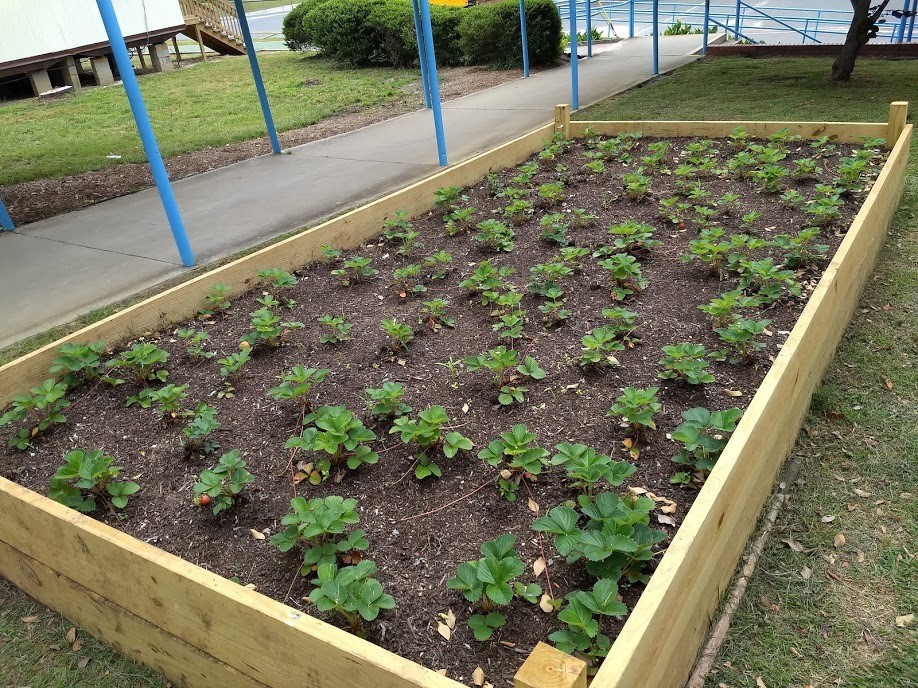
Afterschool STEM Club
The afterschool STEM club at Hawking Middle School began as part of an NSF-funded research project at the University of North Carolina at Greensboro (UNCG). The UNCG project involved bringing youth from three nearby middle schools to engage in a series of four Saturday workshops designed by project researchers and held on the university’s campus. Youth participation in these activities centered on issues of stormwater runoff on the university’s campus with a focus on providing youth with opportunities to engage in authentic disciplinary STEM practices. Two science teachers from each middle school participated in the learning activities and collaborated to design afterschool STEM clubs for their schools that reflected the pedagogical model used during the Saturday workshops. Part of this model included “fostering individual and collective agency”—a target that each school took up in different ways. One mark of collective agency for the afterschool clubs was the completion of a school-based project to support stormwater management at their school.
Of the three participating schools, Hawking Middle School successfully implemented a solution for a stormwater flooding issue at their school, thus demonstrating a high level of collective agency. The other two schools successfully implemented afterschool clubs focused on stormwater management; however, organizational issues at the schools prevented them from completing their final projects. We focus on Hawking Middle School to demonstrate the tensions between individual agency and collective agency when teachers and students work together to complete a school-based project.
Mrs. Walker and Mr. Daniels, science teachers and club facilitators at Hawking Middle School, designed the afterschool STEM club in coordination with organizations both inside and outside of the school. As part of the Saturday UNCG activities, Mrs. Walker and Mr. Daniels walked with youth through Hawking Middle School’s campus in search of potential problem spaces related to stormwater runoff. The youth and teachers both identified the pooling of water outside their school’s cafeteria entrance as a significant issue that the club could address. Based on student ideas from the Saturday workshops, the teachers organized the afterschool STEM club around a final project to construct a rain garden at the school. The rain garden would act as a mechanism to help prevent rainwater from pooling at the bottom of a hill that served as the only entrance to the school’s cafeteria. Through a school partnership with a local environmental nonprofit, the rain garden at the school would serve as an initial model for a rain garden at their city’s newly constructed city hall. In addition, the science teachers coordinated with the teacher of their high school’s agricultural and environmental program, who provided guidance with plant selection and setting up the planter box, and assisted with the water quality activity. Club meetings took place weekly after school for six weeks. The first author on this paper acted as a participant observer in the club by assisting where needed and engaging with youth each week, although the design of each week’s activities remained largely in the hands of Mrs. Walker and Mr. Daniels.
As the club’s facilitators, Mrs. Walker and Mr. Daniels structured the club’s activities mostly to support the youth’s collective agency while providing fewer opportunities for individual agency. The teachers designed the rain garden, and the activities either held youth to specific procedures or did not have a direct consequence on the final design of the rain garden. Despite the lack of individual agency in the activities, the youth demonstrated collective agency by successfully constructing a rain garden for their school.
To highlight how the club’s activities demonstrate a tension between individual and collective agency, Table 1 (see Supplementary Resources) describes each activity and its relationship to individual and collective agency. We selected two of these activities to describe in greater detail because they represent a contrast between individual and collective agency in the broader context of the project. During the second week, students used Tinkercad to generate designs for 3D-printed models of the rain garden; this activity demonstrated how high degrees of individual youth agency does not necessarily foster collective agency. In contrast, an activity in which youth potted seedlings (which would be planted in the final rain garden) afforded youth a high degree of collective agency but little individual agency. In profiling these activities, we also describe some of the factors that influenced Mrs. Walker and Mr. Daniels in designing each activity.
Activity 1: 3D Design of the Rain Garden Using Tinkercad
During the club’s second meeting, youth used Tinkercad on laptops in the school’s media center to create 3D designs of a potential rain garden. This represented the first engagement in the problem space, as youth primarily engaged in activities outside of the rain garden context during the first week. This activity was led by Mrs. Glenn, the school’s media specialist. After Mrs. Walker gave a brief introduction about the goal for the day, Mrs. Glenn provided an overview of how to use Tinkercad. She then distributed laptops to groups of youth who worked in clusters to design a model of a rain garden that were later printed using one of the media center’s 3D printers. Youth worked with one laptop per group, so only one youth could manipulate the program at any given time. At the end of the one-hour session, youth packed up their laptops and did not return to these designs in subsequent weeks.
Individual agency
Youth’s participation in this activity looked largely similar: Each group of youth used Tinkercad on identical devices to design a rain garden for the same space outside. Within these structural constraints, youth were afforded a degree of individual agency in how they engaged with the project. For example, each group of youth negotiated roles among group members. One member of each group typically served as the primary user of the laptop as other group members helped in more of a design capacity. In addition to the roles each youth played in their groups, each group had agency in deciding how the rain garden would look. Youth chose to implement a wide range of features such as benches, filtration systems, sign wording, flowers, and dogs. These points of divergence in the Tinkercad designs reflect a degree of individual agency that each youth could exercise. Because each final product could look different, youth made creative decisions about how to structure their designs.
Collective agency
While youth in this activity had individual agency over the final design of their gardens as negotiated with the ideas of other youth in their groups, these designs were not used to inform the final design of the rain garden. Mrs. Walker and Mr. Daniels noted feeling constrained by both time and resources as the rationale behind this decision. The idea for the Tinkercad activity came from an external source: the school’s principal. The school’s new media coordinator had secured grants for 3D printers that leaders in the school felt were being underused. Despite initial enthusiasm, excitement over the school’s newly implemented 3D printing club had waned. In the interest of leveraging these resources, Mr. Daniels and Mrs. Walker handed the reigns for this session largely over to Mrs. Glenn. While this decision provided youth with a platform for creating and sharing ideas for the rain garden, this individual agency did not translate into collective agency around the final product of the club.
Factors influencing the activity design
Reflecting on these Tinkercad designs after the session, Mrs. Walker noted being impressed by the variety of features and innovations. She lamented the fact that they would not be able to implement these ideas in the rain garden’s final design largely due to time and material resource limitations. After the conclusion of the six-week club, Mrs. Walker revisited this as a point of regret in the club design. She noted that she would have liked to have taken more time so youth could flesh out these designs and use their ideas to inform the garden’s final design. However, the tight schedule and need to complete the final garden by a specific deadline meant there wasn’t time to meaningfully do this work. Mrs. Walker and Mr. Daniels felt pressure to build the rain garden quickly, as they had already ordered the strawberry seedlings that would need to be planted in time for the growing season so that students could harvest strawberries before the end of the school year. Given the opportunity to revisit the design of the club, both Mrs. Walker and Mr. Daniels noted that they would extend the club beyond six weeks to allow for more youth agency in designing the final form of the garden.
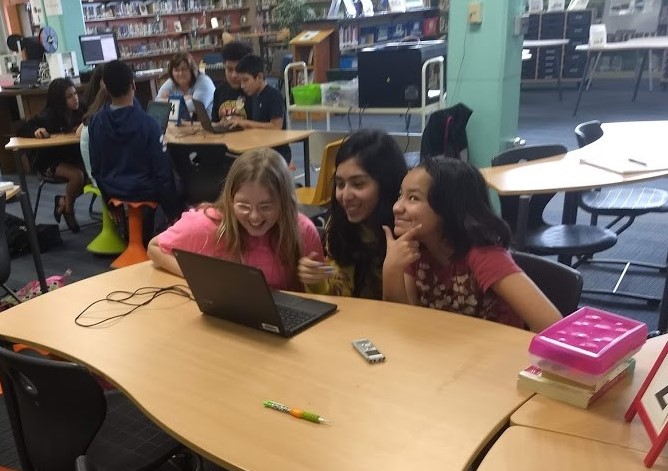
Activity 2: Potting Seedlings
During the club meeting following the Tinkercad designs, youth worked collaboratively to plant strawberry seedlings in temporary pots, which would be planted in the finished garden. Mrs. Walker began the session by leading the group outside to the proposed site of the garden: the bank of a hill that directed rainwater to the front door of the school’s cafeteria. This marked the first time that the club had visited the site of the garden, although youth in the club knew the spot well from their daily travels to the cafeteria. Mrs. Walker used a phone app to measure the perimeter of the plot and prompted youth to conduct mental math to estimate the plot’s area. The group then retrieved a box of strawberry seedlings, and Mrs. Walker and Mr. Daniels guided students to begin planting them in the science classroom. This potting took the rest of the club time, yet not all of the seedlings were planted by the end of the day. Many were planted on a subsequent day by Mrs. Walker’s science students. She also organized a watering schedule among club members to keep the potted seedlings nourished until final planting could take place.
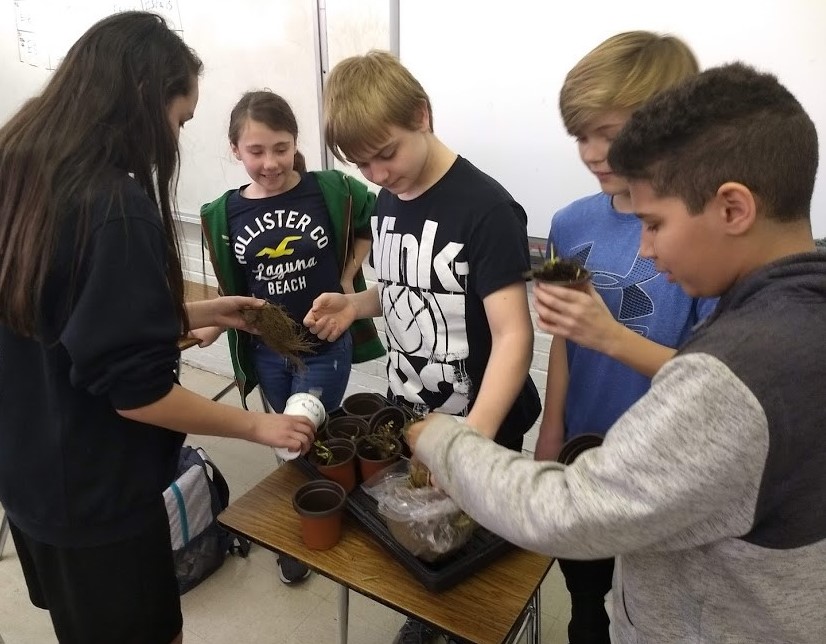
Individual agency
By planting seedlings, youth exercised little individual agency. The youth operated with the same objective: Use the same procedure to plant the seedlings to create the same product. Whereas the Tinkercad designs enabled youth to innovate and create differing products, a “correct” procedure for planting the seedlings meant that youth could not make decisions that influenced the shape of the final product. This is not to say, however, that youth had no individual agency in this activity. Youth in each group negotiated roles, which included transferring soil, planting seedlings, and watering plants. In some groups youth participated in all roles, while in other groups labor roles were divided. Still, the survival of the seedlings depended on youth following a defined procedure to create final products that looked largely identical to each other.
Collective agency
While the youth had little individual agency in transplanting seedlings, they demonstrated a strong collective agency as a club that accomplished a vital step in achieving their ultimate goal: building a rain garden. This collective objective proved successful. The final garden consisted of two boxes constructed on the hill leading to the cafeteria, and one box was completely filled with strawberry plants. These plants quickly produced berries that were enjoyed by students at the school for the rest of the school year. Had the seedlings remained unpotted, they would have likely withered and died if students waited another three weeks to plant them in the new rain garden. In this way, youth in the club exercised a high degree of collective agency to create a meaningful final product despite having little individual agency during the activity.
Factors influencing the activity design
Upon reflection, Mrs. Walker noted that she would have liked to have skipped the potting process entirely, instead favoring planting the seedlings directly from the shipping box into the rain garden. However, she noted that the plants had begun to develop leaves, suggesting that they needed to photosynthesize. This forced a rapid-response design for the club session in which Mrs. Walker and Mr. Daniels needed to create a solution to an emerging problem. There were too many seedlings to be potted by two teachers, so they decided to bring the whole club into the fold. In subsequent club sessions, youth explored other issues related to stormwater runoff at their school such as the impact of runoff on a nearby creek. However, the potting of the seedlings stood as the final direct involvement in the garden project until construction of the garden during the sixth week of the club.
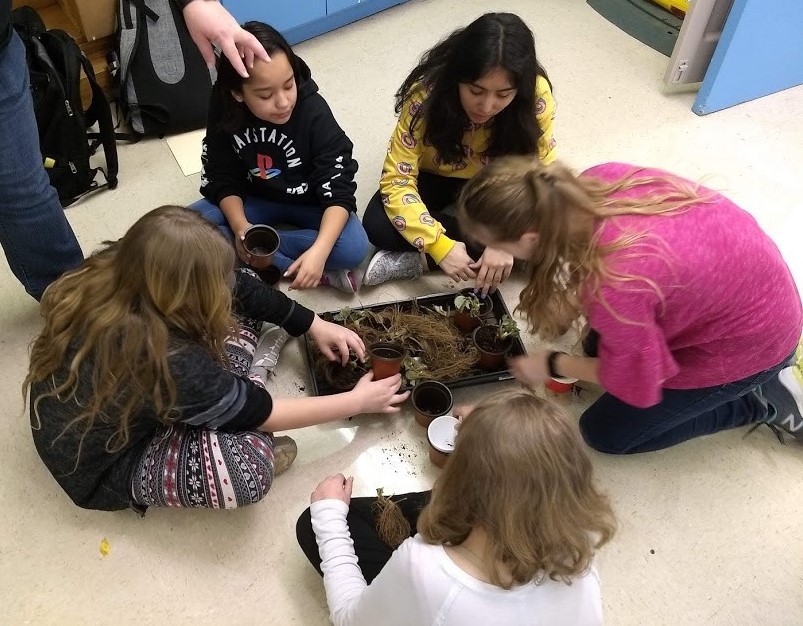
Comparing the Activities
Enabling youth to demonstrate individual agency may allow for more access points to an activity with more diverse modes of participation, yet the collective agency of the club could be considered equally important. In many cases of collaborative work, members of a community must collectively decide on the design of a project that may not afford the incorporation of ideas from all the group’s members (e.g., Pelenc, Bazile, and Ceruti 2015). While individual youth agency provides youth with more consequential modes of engagement (Calabrese Barton and Tan 2018), we argue that collective agency can also provide such opportunities. Throughout the STEM club at Hawking Middle School, youth demonstrated enthusiasm for the work and pride in the finished product. In a post-project interview, Mrs. Walker noted that the rain garden provided students with strawberries that they would regularly pick and eat. The youth collected a basket of strawberries that they proudly gave to their principal as the fruit of their labor. Youth from the club frequently requested more club meetings after the club had concluded, suggesting that participation in a club structured around collective agency resulted in a consequential STEM experience for these youth.
Calabrese Barton and Tan (2018) describe another example of collective agency in an out-of-school Maker club in which the youth decided that the space in which the club met no longer served their needs; some issues included the space being too small and noisy. The authors describe engaging youth in Youth Participatory Action Research (YPAR) in which youth investigated and designed solutions to the problems that they identified alongside the facilitators of the club. The youth created a list of needs for their new space, designed a workshop meant to engage community members in their vision of making, and presented their proposal to the community club’s board of directors, who approved the proposal. In this mission, Calabrese Barton and Tan (2018) describe ways in which the youth exercised both individual and collective agency. Individually, youth took responsibility for different parts of the workshop that they presented to the board of directors. Collectively, youth came to a consensus about the needs of the club and their vision for a future space. These processes were guided by the club’s facilitators, who at times intervened to make executive decisions about the ways in which consensus could be formed and how to present the club’s ideas to the board of directors. Each time such an intervention occurred, the youth lost an opportunity to make individual and collective decisions, and yet without these interventions, the proposal for a new space would likely have resulted in failure. This result parallels the decisions made by Mrs. Walker and Mr. Daniels at Hawking Middle School to take total control over the final design of the garden.
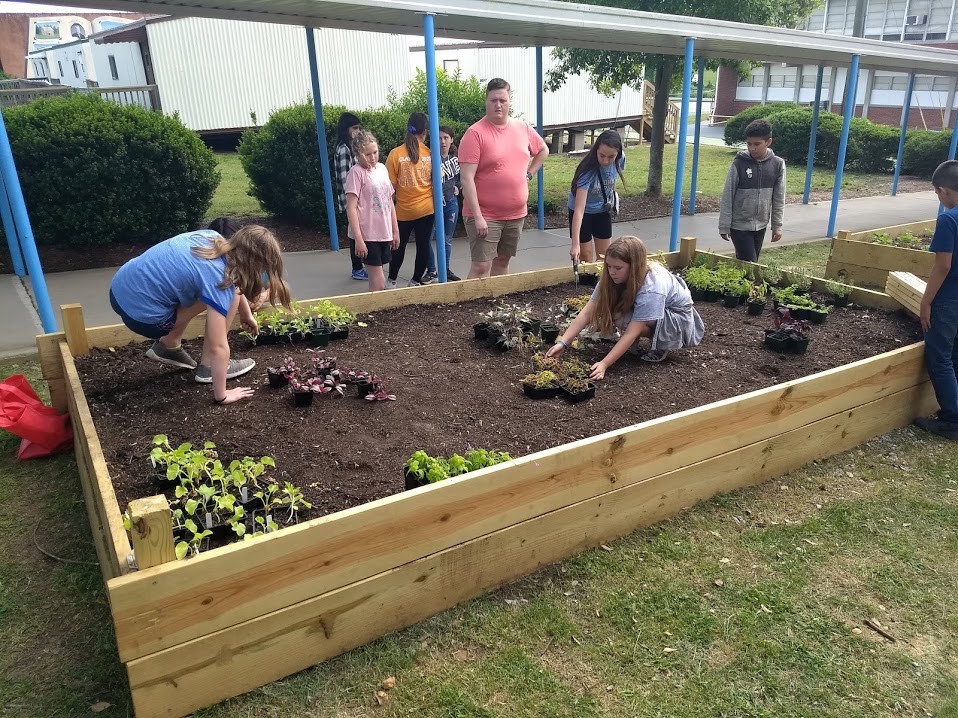
Accounts like those presented in STEM-Rich Maker Learning (Calabrese Barton and Tan 2018) and the afterschool STEM club at Hawking Middle School suggest that individual and collective agency can sometimes be at odds. At Hawking Middle School, activities in which the youth had greater opportunities to express individual agency resulted in little collective agency, and vice versa. How, then, should a balance be struck between individual and collective agency? At Hawking Middle School, several external forces presented situational needs that influenced the design of activities. For example, the pressure placed on Mrs. Walker and Mr. Daniels to incorporate the school’s 3D-printers meant that the club facilitators designed an activity that was relevant to the club’s mission, yet did not contribute to the final product. In a follow-up interview, Mrs. Walker noted that time limitations significantly influenced the design of the club. The club met for only six sessions, one of which consisted of building the final garden. Mrs. Walker lamented the fact that youth could not take a greater role in designing the final garden, but she felt that five weeks was not enough time for youth to learn about building rain gardens and make informed decisions about the design. She noted that even if the club had had more time, the technical knowledge required to build the product may have been outside of the youth’s capabilities. Mrs. Walker and Mr. Daniels collaborated with the local high school’s shop teacher on some of the technical details of the construction. By limiting youth’s individual agency around making design decisions, Mrs. Walker and Mr. Daniels afforded the group a greater collective agency that resulted in the successful construction of a garden.
Based on our observations of this club, we might make several changes in subsequent iterations of the rain garden project to rebalance the youth’s individual and collective agency. For example, teachers could introduce specific decision points in which youth could provide input on the final design of the garden. Such decisions could be as minor as determining what color to paint the garden structure or as major as how many and what plants to include in the final beds. Additionally, the final design of the rain garden at Hawking Middle School took the form of two raised beds along the hill outside of the school’s cafeteria. Dividing the youth into two teams, each focused on one bed, may have allowed for more ways in which the youth could have customized the planters. By introducing variability in the final design based on youth’s input, the project may have allowed for more individual agency without significantly risking the successful completion of the garden.
Conclusion
When making decisions about trade-offs between individual and collective agency, designers of instructional contexts must weigh multiple contextual factors. Some questions to consider include:
- How many products are appropriate for this learning space? Should students work together to create one product, work in teams to create separate components of a larger product, or create separate products?
- If students work on a collective project, what aspects of the project could vary with student input?
- How much time is necessary to complete the products? How can you distribute the work over groups of students to create more opportunity for individual agency within the collective project?
- How can external stakeholders with an interest in the project be leveraged to support students to reflect on their individual efforts toward the collective goal or objective? What kind of just-in-time feedback (Calabrese Barton and Tan 2018) can stakeholders provide to move students’ individual agency toward their collective goals?
- What expertise do students possess that could be used as a basis for them to make decisions about the design of the final product?
Whether in an afterschool club, a science classroom, or an informal institution, facilitators must consider the availability of resources and the feasibility of meeting collective goals. For example, a classroom teacher incorporating project-based learning makes decisions about the parameters they place on the final product. If the students have total liberty in designing the product, they may lack the expertise to fulfill their vision, resulting in unproductive frustration. At the other extreme, youth with little individual agency will likely have few opportunities to connect their interests, passions, and expertise to the project. The individual differences among structural features like material resources, social resources, time constraints, curriculum, grade levels, and community opportunities mean that no formula can dictate precisely how designers of STEM instruction should strike a balance between individual and collective agency. Instead, designers of instruction must weigh the potential costs and benefits of their lessons and activities. By mindfully considering and intentionally designing for individual and collective agency, designers of instruction can empower youth to accomplish goals that would otherwise lie beyond their reach.
Acknowledgments
This material is based upon work supported by the National Science Foundation under grant No. 1657194. Any opinions, findings, and conclusions or recommendations expressed in this material are those of the authors and do not necessarily reflect the views of the National Science Foundation.
David Schouweiler (schouweilerd@gmail.com) is a graduate student and Sara C. Heredia is an assistant professor in the Teacher Education and Higher Education department at The University of North Carolina at Greensboro.
citation: Schouweiler, D., and S.C. Heredia. 2021. Balancing individual and collective agency in informal STEM learning experiences. Connected Science Learning 3 (1). https://www.nsta.org/connected-science-learning-january-february-2021/balancing-individual-and-collective-agency
Engineering STEM Teaching Strategies Middle School Informal Education


